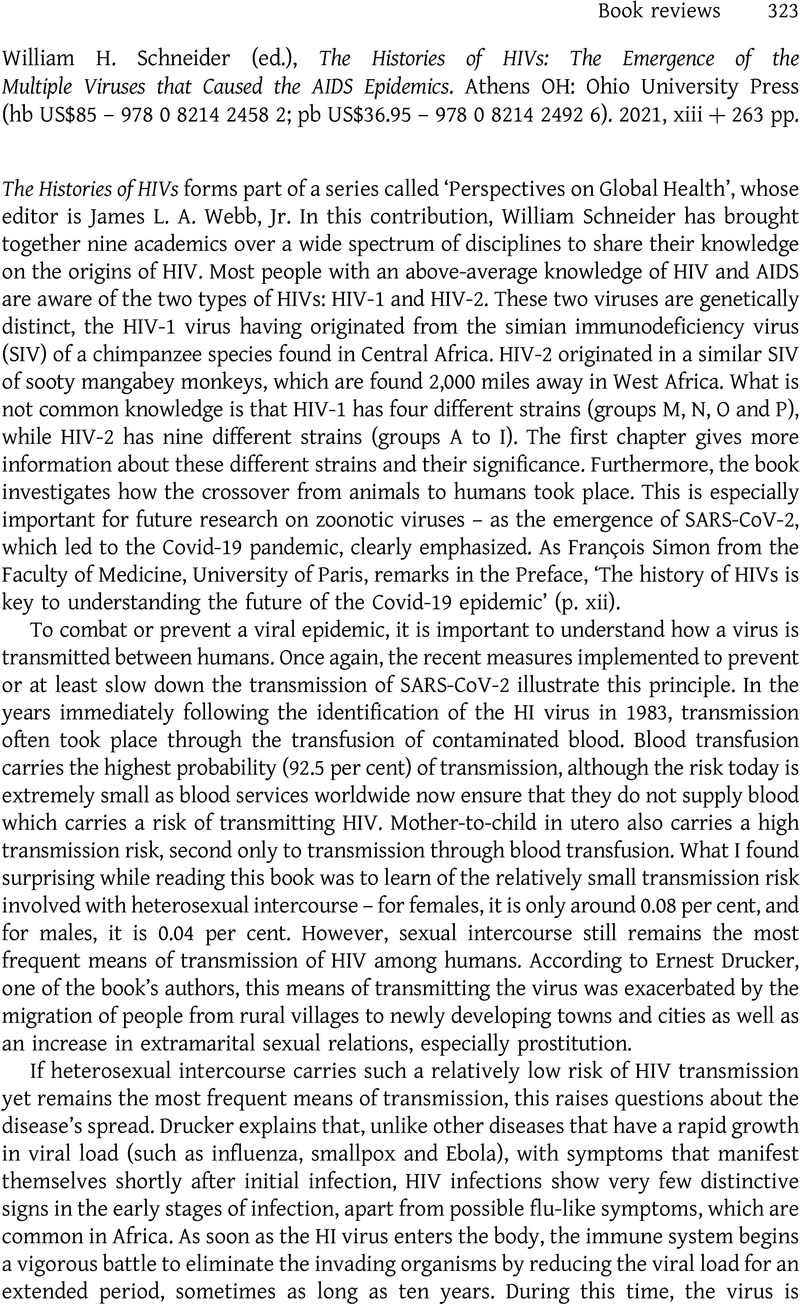No CrossRef data available.
William H. Schneider (ed.), The Histories of HIVs: The Emergence of the Multiple Viruses that Caused the AIDS Epidemics. Athens OH: Ohio University Press (hb US$85 – 978 0 8214 2458 2; pb US$36.95 – 978 0 8214 2492 6). 2021, xiii + 263 pp.
Review products
William H. Schneider (ed.), The Histories of HIVs: The Emergence of the Multiple Viruses that Caused the AIDS Epidemics. Athens OH: Ohio University Press (hb US$85 – 978 0 8214 2458 2; pb US$36.95 – 978 0 8214 2492 6). 2021, xiii + 263 pp.
Published online by Cambridge University Press: 29 May 2024
Abstract
An abstract is not available for this content so a preview has been provided. Please use the Get access link above for information on how to access this content.

- Type
- Reviews
- Information
- Copyright
- © The Author(s), 2024. Published by Cambridge University Press on behalf of the International African Institute



